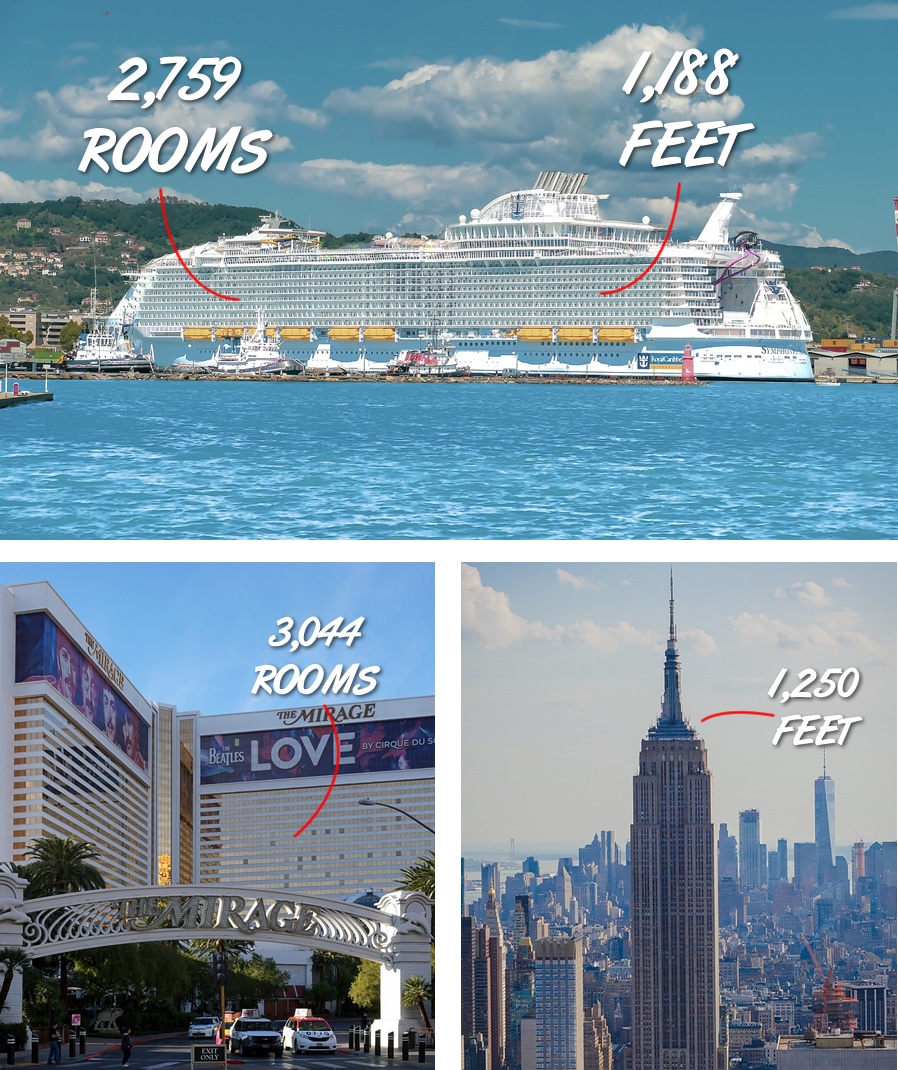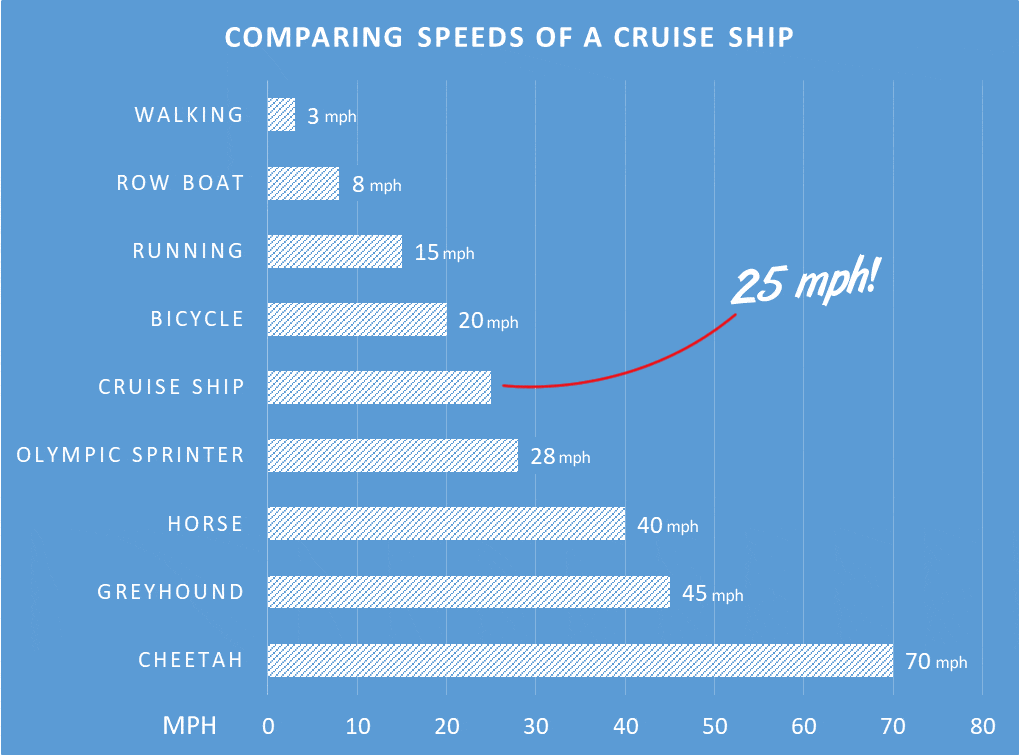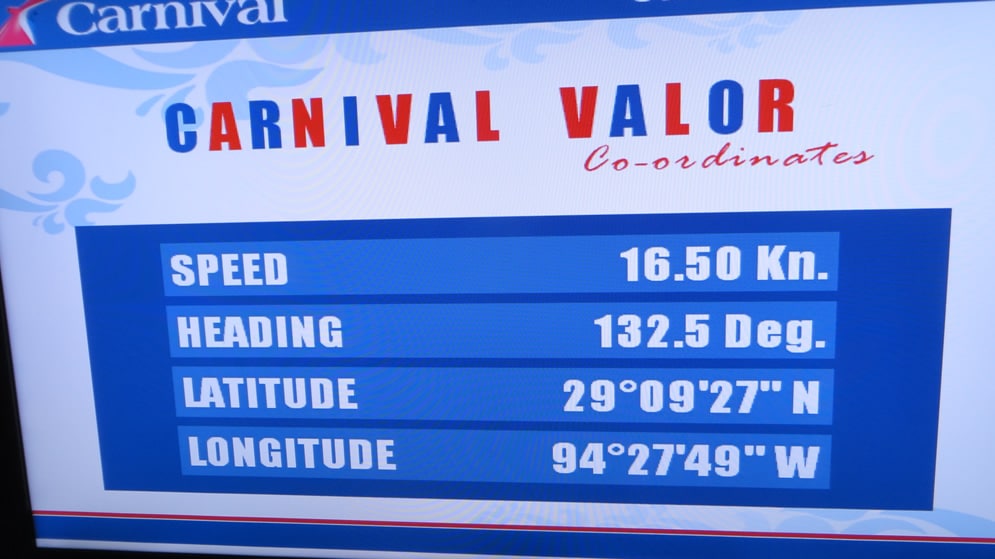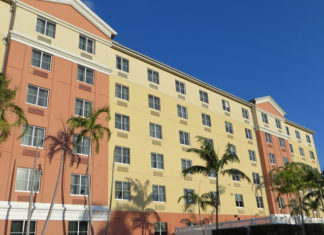Think of a cruise ship and you likely picture a massive, lumbering vessel that plods slowly along while everyone on board is dancing in a conga line. Life on board is slow and relaxed, as is the ship as it moves from port to port.
Cruise passengers know the truth is very different.
For one, ships are much more than just people dressed in Hawaiian shirts doing cheesy dances. Modern ships offer tons of things to do from working on your tan to riding a roller coaster at sea.
As well, the ship you sail can move much faster than most people realize — especially given their massive size. If you’ve ever wondered how fast cruise ships can go when they are at sea, you might be surprised how quick they can move.
The Monumental Task of Moving a Skyscraper Across the Ocean

Before getting to the specific speed numbers of cruise ships, there needs to be some context.
If you’ve never sailed before, then it’s hard to explain just how large cruise ships are today. To say they are floating hotels is 100% accurate, but it actually undersells their ridiculous size.
The largest ships in the world are Royal Caribbean’s Oasis class. These ships are roughly 225,000 gross tons. They measure nearly 1,200 feet long and have 18 decks. For reference, the roof the Empire State Building is 1,250 feet from the ground.
At full capacity, the ships can hold nearly 6,700 passengers and 2,200 crew. In other words, on a single ship you can have nearly 10,000 people at a single time. And with nearly 2,800 staterooms, the largest ships are just slightly smaller than The Mirage in Las Vegas when it comes to the number of rooms.
In other words, you’re taking a massive Las Vegas resort, or a building nearly the height of the Empire State Building, laying it on its side and then sailing it all around the world.
The fact they can move at all is impressive. But the speed at which they can move is even more so.
How Fast the Ships Go (Nearly As Fast Usain Bolt)
So how fast can cruise ships sail? While passengers are on the ship eating dinner, hanging out by pool, gambling in the casino, or watching a show, most cruise ships can sail along at a cruising speed of about 22 knots.
Since a knot is about 1.15 miles per hour, a cruising speed of 22 knots comes out to roughly 25 miles per hour.
Not every ship goes this fast, but many do. For example, Royal Caribbean’s Wonder of the Seas — the largest ship in the world — has a cruising speed of 22 knots according to Royal Caribbean. Carnival Breeze can cruise along at 22.5 knots. Notably, some ships have a slower cruising speed. Carnival’s Mardi Gras shows a cruising speed of a slower 17 knots according to the cruise line.

At first glance, going along at 25 miles per hour may not seem that fast, but for comparison, many residential streets have a 25 mile per hour speed limit. So the next time that you see a car drive past your house, imagine instead that a cruise ship is sailing by that quickly.
Or compare that speed to the world’s fastest man, Usain Bolt. In one sprint he can reach speeds of up to 28 miles per hour, barely faster (and for only a brief moment) than a cruise ship can sail.
If a cruise ship could sail on land, then it would take about 100 hours — just over four days — to make its way from New York to Los Angeles. That’s impressive for a structure the size of a cruise ship.
Even so, you may never see your cruise ship sail as fast as they can on your trip.
Why Cruise Ships Don’t Always Sail This Fast

Truth is that despite their ability to sail along at roughly 25 miles per hour, often passengers don’t experience this sort of speed. Most of the time your trip is at a much more leisurely pace.
There are a couple of reasons for this. First is scheduling. While you are free to do what you want, when you want while on a cruise, the ship itself is on a schedule. It has arrival times and departure times that it needs to keep. So if a ship departs Miami one afternoon and is sailing overnight to a private island in The Bahamas that’s just a couple of hundred miles away, then sailing at 25 miles per hour would put it arriving at the destination too fast.
Instead, the ship sails slower in order to arrive on time.
As well, just like your car, the faster a ship goes, the more fuel it will burn. Imagine a vessel the size of a cruise ship pushing through tons of water, in addition to the wind at sea. The faster the ship goes, the more energy it takes to move through all that air and water. So if a ship doesn’t have to push as fast to make its schedule, then it can save fuel by slowing down.
Unless you are sailing longer distances on a tighter schedule, then you may not really see what the ship can do.
For instance, we’ve sailed from Galveston to the Western Caribbean, which involves crossing nearly 800 miles of the Gulf of Mexico to reach the nearest port of call. In this case, the ship has definitely reached cruising speed near 25 miles per hour.
In between ports that are closer together, however, the pace is much slower meaning you might not get to experience how fast the ship can really cruise.






